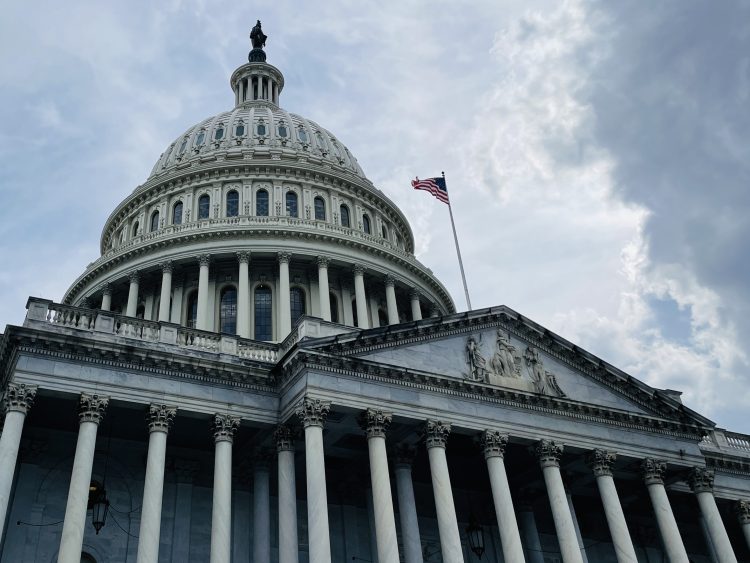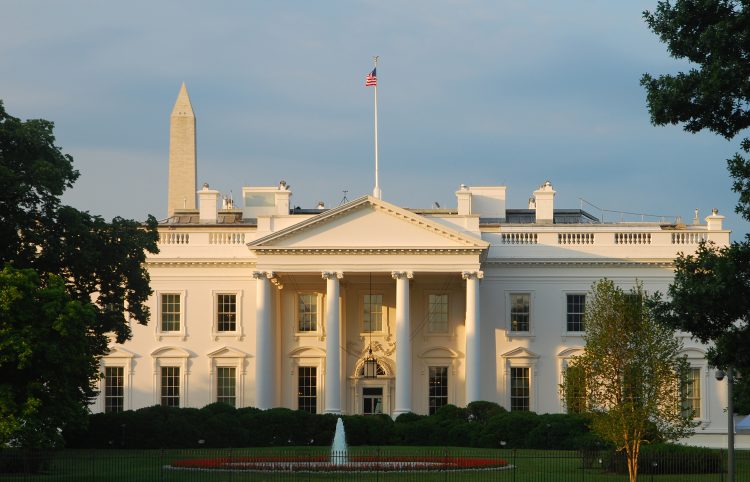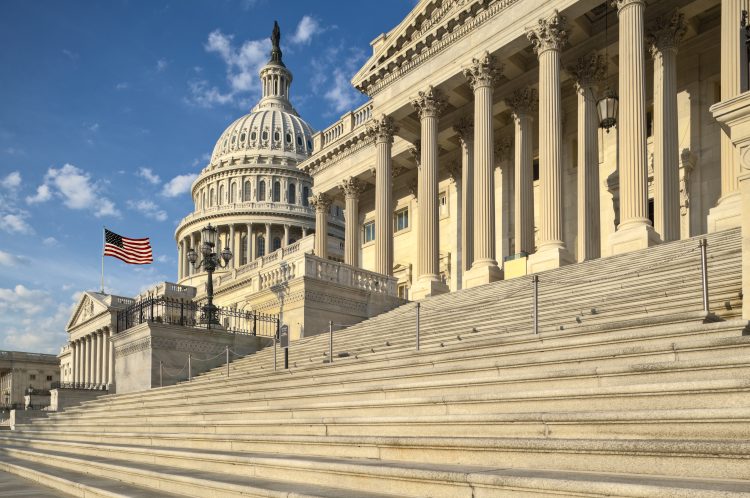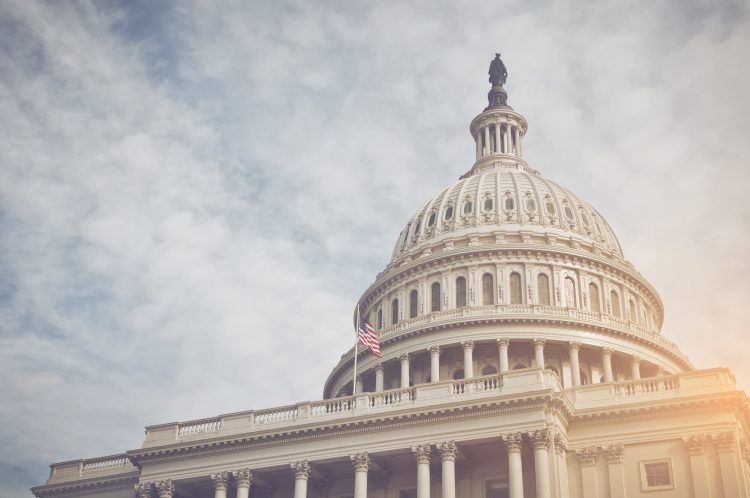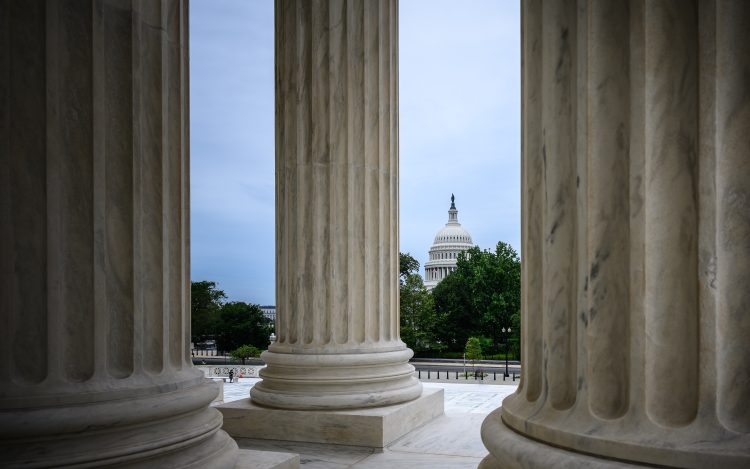This week on Facing the Future, we took a deep dive into defense spending, the largest portion of discretionary spending (i.e., annual appropriations)in the federal budget: President Biden proposes spending $842 billion for the Pentagon in his proposed fiscal year 2024 budget, which is $69 billion higher than the Pentagon’s $773 billion budget request last year. Joining us to interpret why we are spending so much on defense and what that money pays for was Dr. Gordon Adams, professor emeritus of international relations at American University’s School of International Service. Dr. Adams oversaw the Defense and National Security portfolio at the White House Office of Management and Budget (OMB) during the Clinton administration. Concord coalition policy director Tori Gorman joined me for the conversation.
Dr. Adams traced the up and down trends in defense spending over the past 30 years as the Cold War ended, causing a decline, while the post-9/11 conflicts in Iraq and Afghanistan somewhat reversed that trend. The overall trend, he said, is that the Pentagon budget has continued to rise.
“When I was at OMB in the mid 1990s, the Pentagon budget was around $250 billion, so you can see in the long span of history, the number has gone up exponentially,” said Adams. “There are only two reasons that Defense budgets go down. One is because we end a war. We don’t need so many troops, we don’t need so much equipment, we can train less, we deploy less, there are a whole bunch of costs we don’t need to expend. Two is because there are constraints on the federal budget. The kind of work The Concord Coalition and other people do. Outside of defense, someone says ‘hey we need to do something about federal spending.’ As we did with Gramm-Rudman-Hollings in the mid 1980s, or the Budget Enforcement act of 1990, or the Budget Control Act of 2011. All of those were ways of saying we think we’re spending too much, we need to be able to contain that spending. And when you cut that political deal, you can only do it by including both defense and domestic spending in the mix.”
Adams went on to point out that one perspective attributes over $1.5 trillion a year on defense spending, if you include other related spending that goes to other federal departments. This includes funding for the production and maintenance of nuclear weapons at the Department of Energy, subsidies to the Coast Guard and other funding for the Department of Homeland Security, foreign aid in the State Department, the Department of Veterans Affairs, and all of the federal interest payments on debt incurred by defense spending. And there are supplemental portions of the defense budget to pay for unforeseen emergencies such as all the military aid the U.S. is sending to Ukraine to repel the Russian invasion. It all adds up to a larger and larger bill, and defense contractors have become experts at lobbying lawmakers to add funding for projects the Pentagon doesn’t even ask for. Of course this means good paying jobs in many Congressional districts. Adams says ever since automatic spending restraints imposed during the Obama administration lapsed, Congress has been off to the races with defense spending.
“If the Defense budget as proposed for fiscal year 2024 is $842 billion, what was the 2024 number projected in the previous two budgets? How different is what Congress did to it? The answer is $95 billion different. That’s huge, and quite unprecedented,” said Adams. “In the budget request sent up in 2022, it was supposed to be $747 billion by 2024. So we’re $95 billion higher than people thought it would be two years ago. Last year we saw $43 billion worth of Congressional additions to the defense budget. That is really unprecedented since 1981, when Reagan added $52 billion. These numbers do not include aid for Ukraine, and it is way beyond the projected impact of inflation. Of the total additions, more than half of it was for additional pieces of equipment. That’s something that members of Congress love to add.”
Adams had an interesting take on how the U.S. military was prepared for the war in Ukraine, even though no one was expecting a major ground war in Europe.
“We spent a lot of our time preparing and arming and buying and procuring and training around a ground war in Europe,” said Adams. “When 9/11 hit, it was a big oops, because we hadn’t trained or prepared significantly at all to deal with the threat of terrorist organizations internationally. Even though people had been warning us about it, we had no strategy, we were improvising after 9/11. We re-juggled a certain part of our military to be able to do those things. It didn’t stop the army in particular from grinding people through a training cycle that involved major infantry combat operations. It didn’t stop politicians from stuffing equipment into the budget because it’s made in their districts. All of that equipment is appropriate for a major ground war in Europe. So when the surprise came in Ukraine, oddly enough, we were prepared. A broken clock is right two times a day. We did not anticipate it but we had the supplies in stock that were designed for that war, and we have an industrial base that we’re now cranking up to produce more of those stocks because the Ukrainian military is firing like there’s no tomorrow.”
Adams says the real focus of Pentagon budgeting now, however, is the perceived strategic threat from China.
“What seems to be true late in the Trump Administration and early in the Biden Administration is that the Pentagon is responding to their piece of what they see as the Chinese issue, and it’s in what they’re buying, which is real proof. They put money behind it, and money is policy. So we are investing at a frantic rate on things like hypersonic missiles, because the Chinese and the Russians are, but also because it’s a nifty technology if you want to deliver a warhead faster and with less visibility than anything we currently have. We’re putting $11 billion into hypersonics, we have all the R&D base we need to do it, we’re producing the first production items in 2024. We’re also investing heavily in artificial intelligence and cyber capabilities. The National Security Administration budget has skyrocketed in the last 10 years. There’s $1.5 billion in this budget to enhance security in Guam. There’s a $9 billion dedicated fund for the Indo-Pacific region. We’re deploying forces forward.”
Hear more on Facing the Future. I host the program each week on WKXL in Concord N.H., and it is also available via podcast. Join our guests as we discuss issues relating to national fiscal policy with budget experts, industry leaders, and elected officials. Past broadcasts are available here. You can subscribe to the podcast on Spotify, Pandora, iTunes, Google Podcasts, Stitcher, or with an RSS feed. Follow Facing the Future on Facebook, and watch videos from past episodes on The Concord Coalition YouTube channel.
Continue Reading
